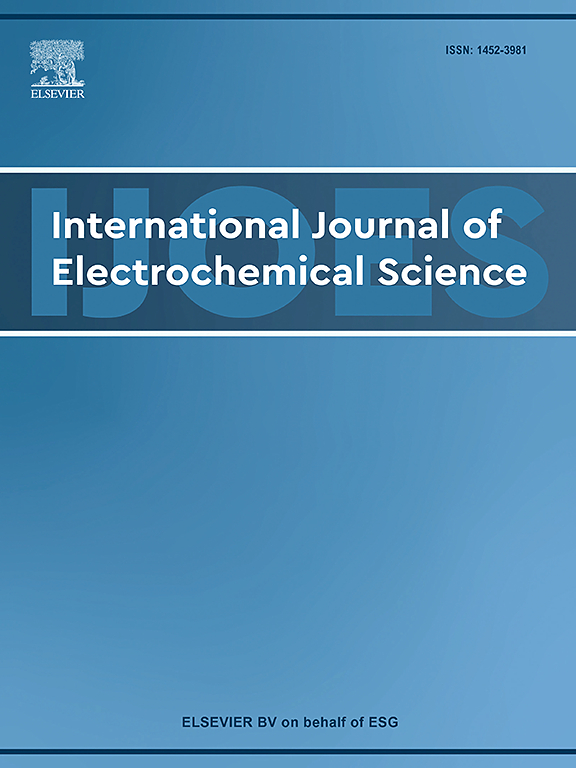Voltammetric analysis of As3+ and sulfamethoxazole on an electrode modified with a composite of carbon dots and graphitic carbon nitride
IF 1.3
4区 化学
Q4 ELECTROCHEMISTRY
International Journal of Electrochemical Science
Pub Date : 2025-01-13
DOI:10.1016/j.ijoes.2025.100947
引用次数: 0
Abstract
The need to monitor priority pollutants in the aqueous environments cannot be overemphasised. Herein, we employed a glassy carbon electrode (GCE) modified with a nanocomposite of carbondots (CDs) and graphitic carbon nitride (g-C3N4) for the determination of arsenic(III) and sulfamethoxazole (SMX) in aqueous media. The composite material, synthesised by microwave technique, was characterised by transmission electron microscopy and X-ray diffraction. The electrochemical behaviours of the modified glassy electrode were also investigated using cyclic voltammetry (CV) and differential pulsed voltammetry. The findings indicated that the constructed g-C3N4/CDs/GCE electrode markedly improved the oxidation peak currents of both analytes, suggesting enhanced sensitivities. Notably, the working ranges and detection limits obtained for arsenic (III) were 2 – 10 and 1.64 μM and 0.3 – 0.1 and 0.10 μM for SMX, respectively. Though, copper, cadmium, lead and zinc were observed to interfere with the determination of As3+, but EDTA was used to mask these interfering effects of the cations. The modified electrode (g- C3N4/CDs/GCE) was used to quantify arsenic and SMX in spiked aqueous solution by standard addition and percentage recoveries of 98–100% and 80–105% were recorded for As3+ and SMX respectively. Thus, the findings of this study established that the investigated nanocomposite material represents an easy and sensitive platform for the determination of As3+ and SMX in the aqueous environments to curb environmental pollution.
求助全文
约1分钟内获得全文
求助全文
来源期刊
CiteScore
3.00
自引率
20.00%
发文量
714
审稿时长
2.6 months
期刊介绍:
International Journal of Electrochemical Science is a peer-reviewed, open access journal that publishes original research articles, short communications as well as review articles in all areas of electrochemistry: Scope - Theoretical and Computational Electrochemistry - Processes on Electrodes - Electroanalytical Chemistry and Sensor Science - Corrosion - Electrochemical Energy Conversion and Storage - Electrochemical Engineering - Coatings - Electrochemical Synthesis - Bioelectrochemistry - Molecular Electrochemistry

 求助内容:
求助内容: 应助结果提醒方式:
应助结果提醒方式:


